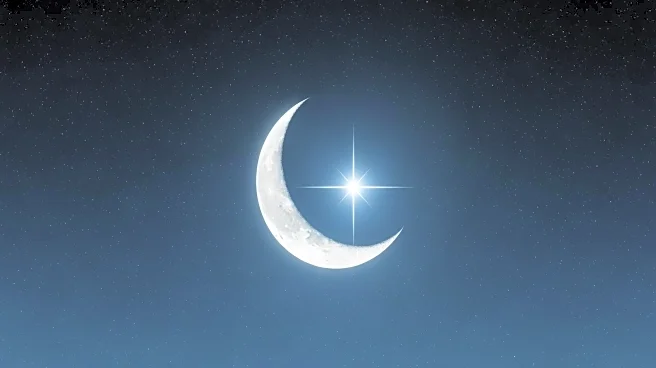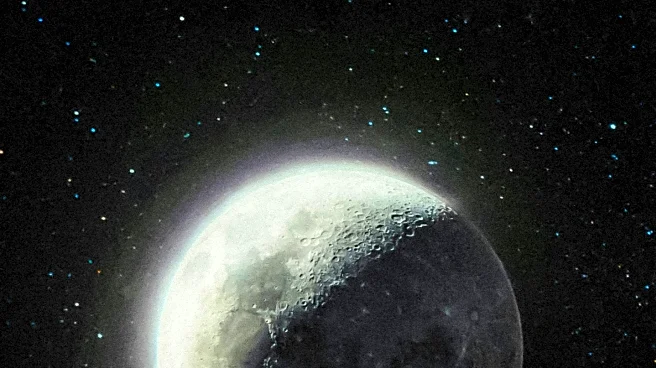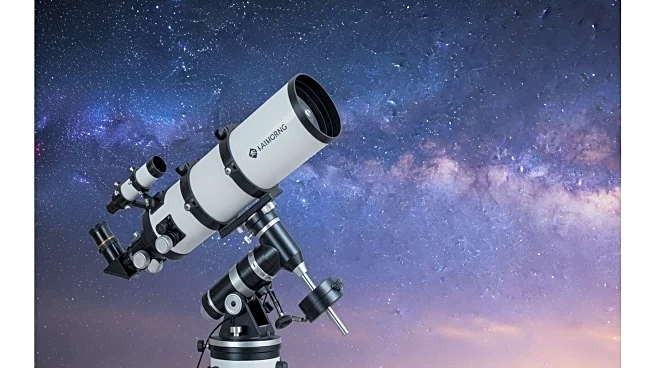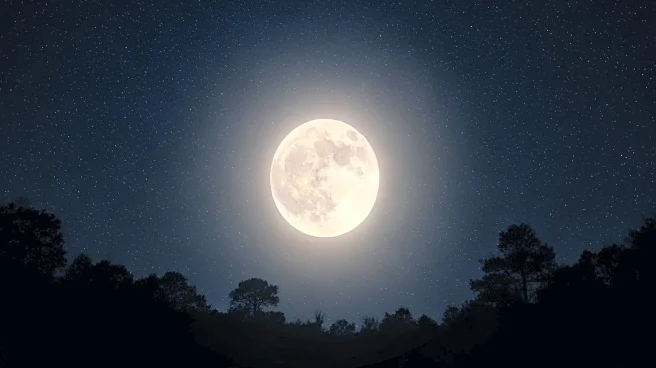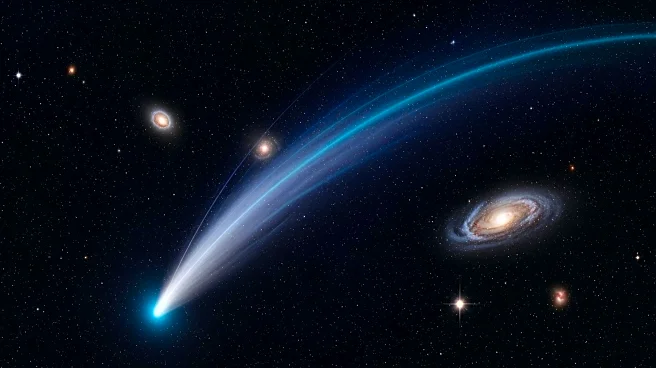What's Happening?
On October 24, the Moon will pass close to the red giant star Antares, which is located in the constellation Scorpius. This celestial event will be visible in the southwestern sky approximately 40 minutes
after sunset. Observers may be able to see earthshine and Mare Crisium on the Moon using binoculars. Additionally, the Teapot asterism of Sagittarius may be visible to the upper left of the Moon and Antares pairing. For those on the U.S. West Coast, a separate event involving Jupiter will occur on October 25, where the shadows of its moons Io and Europa will be cast onto the planet's cloud tops, observable with a telescope before sunrise.
Why It's Important?
This astronomical event provides a unique opportunity for stargazers and amateur astronomers to observe the Moon's proximity to Antares, a prominent star in the night sky. Such events can enhance public interest in astronomy and provide educational opportunities for learning about celestial bodies and their movements. The visibility of earthshine and Mare Crisium offers a chance to observe lunar features, while the Jupiter event allows for the observation of planetary dynamics and moon transits, contributing to a deeper understanding of our solar system.
What's Next?
Following the Moon and Antares conjunction, observers can look forward to the Jupiter event on October 25, where Io and Europa's shadows will be visible on Jupiter's cloud tops. This event will be best viewed from the U.S. West Coast before sunrise. Stargazers are encouraged to use telescopes to enhance their viewing experience and capture the details of these celestial phenomena. Future astronomical events will continue to offer opportunities for observation and study, fostering ongoing interest in the field of astronomy.
Beyond the Headlines
The conjunction of the Moon and Antares, along with the Jupiter shadow event, highlights the intricate dance of celestial bodies in our solar system. These events underscore the importance of astronomy in understanding the universe and inspire curiosity about the cosmos. They also serve as reminders of the vastness and complexity of space, encouraging both amateur and professional astronomers to continue exploring and discovering new aspects of the universe.
